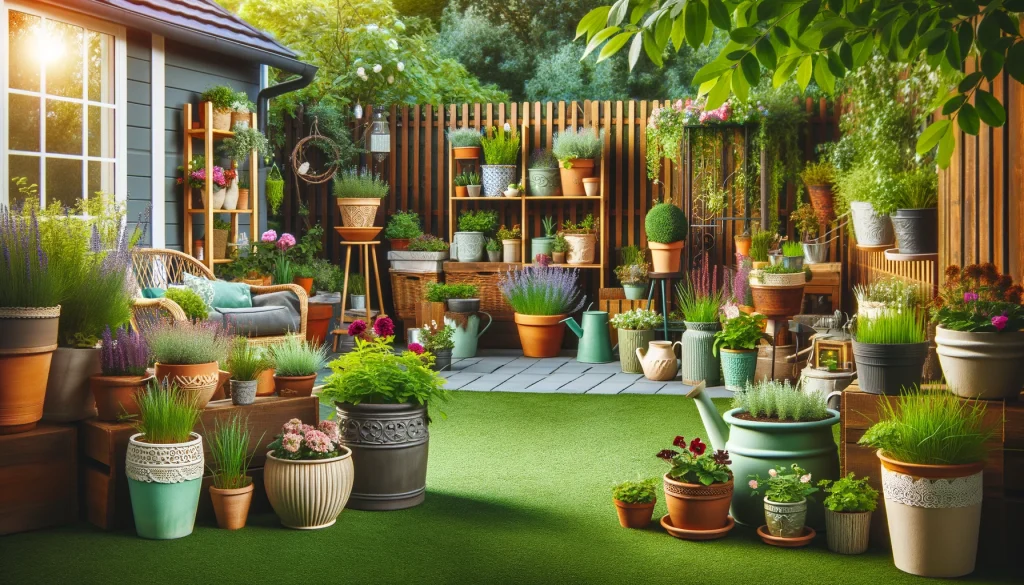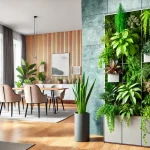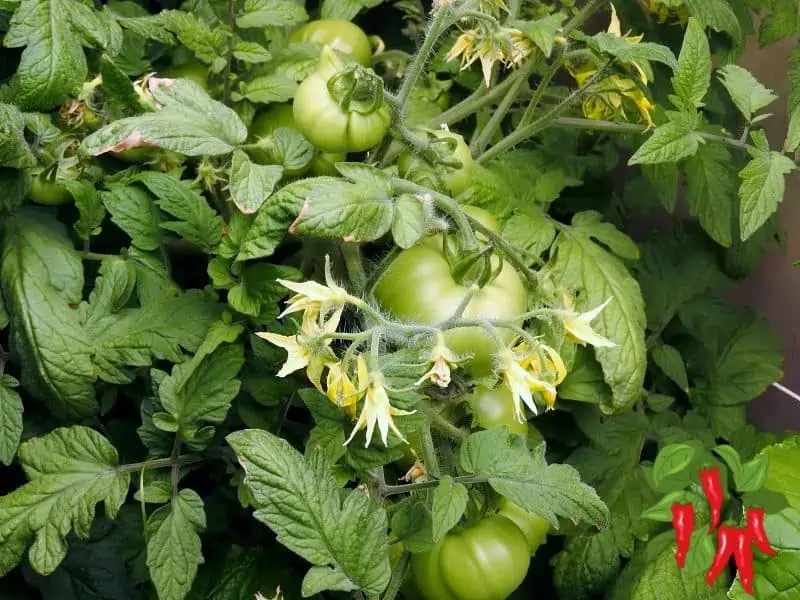This post may contain affiliate links. If you buy something from one of our links we may earn a commission. Thanks
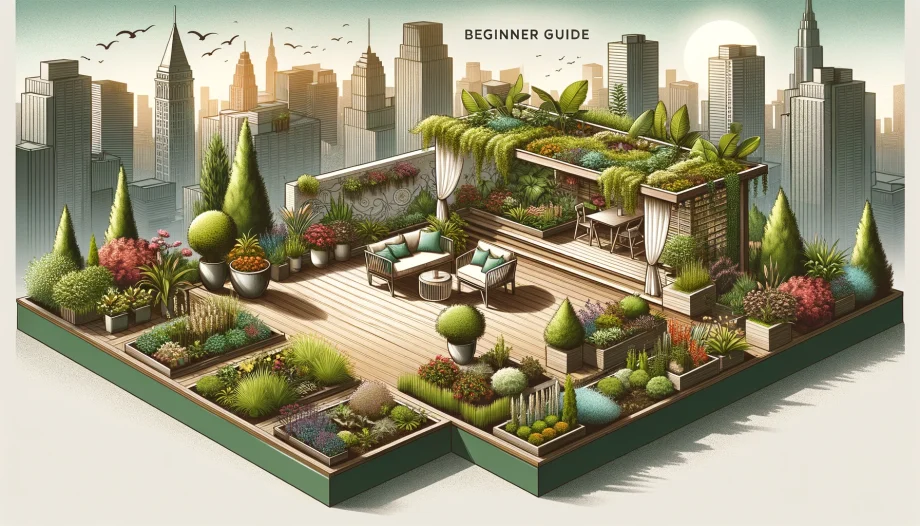
Discover the essentials of rooftop garden design for beginners. Transform your urban space into a green haven with our expert tips and design ideas.
Rooftop Garden Design for Beginners
Key Takeaways:
- Rooftop Garden Design for Beginners involves:
- Assessing the space,
- Considering weight capacity,
- Determining the garden’s purpose.
- Key elements include drainage, irrigation, sun and wind protection, and a seating area.
- Design ideas range from vertical gardens to container gardening.
- Maintenance includes regular watering, pruning, pest control, and seasonal planting.
Have you ever considered transforming your unused rooftop space into a beautiful and functional garden?
Embarking on the journey of rooftop garden design for beginners can be an exciting venture.
Transforming your rooftop into a flourishing garden not only enhances the beauty of your home but also offers a tranquil escape from the bustling city life.
Whether you’re a novice gardener or looking to create your own urban oasis, this guide will provide you with the necessary steps to design a stunning and sustainable rooftop garden.
Rooftop Garden Design for Beginners
Rooftop gardens are not only visually appealing but also offer a range of benefits, from improving air quality to reducing energy costs.
We will explore what a rooftop garden is, why you should have one, how to plan its design, various design ideas, essential elements needed, and maintenance tips.
Whether you’re a beginner or looking to enhance your rooftop garden, this guide has you covered.
What Is a Rooftop Garden?
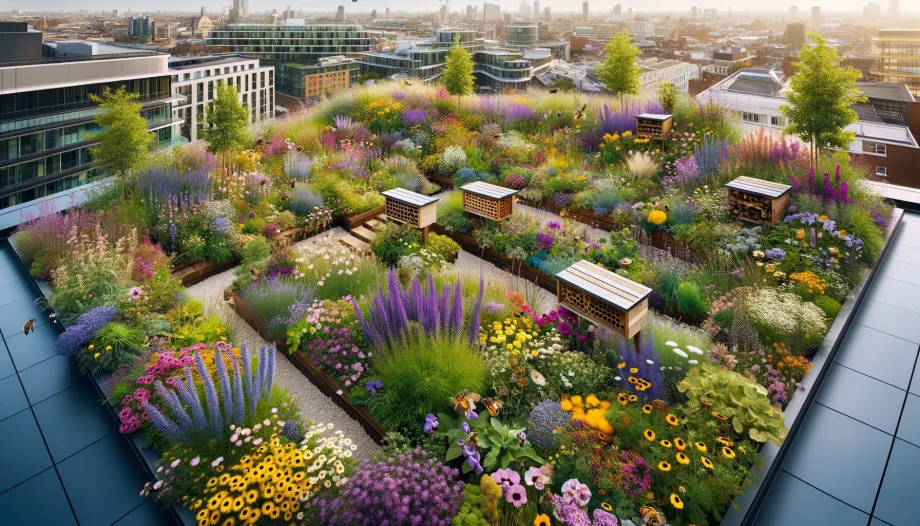
A rooftop garden refers to a green space cultivated on the top of a building, providing a unique oasis amidst urban surroundings.
In urban settings, rooftop gardens play a vital role in combating the concrete jungle, offering residents and urban dwellers a sanctuary in the sky.
These elevated green spaces not only enhance the aesthetic appeal of a building but also provide numerous benefits to the environment and the community.
Plants in rooftop gardens are carefully selected to thrive in limited space and adverse conditions, showcasing a variety of flora in a compact setting.
Creative small garden ideas are often implemented to make the most of the available space, such as vertical gardening, container gardening, and hanging planters.
The innovative use of limited space in rooftop gardens demonstrates that urban areas can be transformed into flourishing oases through thoughtful design and cultivation.
Urban gardens not only contribute to biodiversity but also promote a healthier and greener cityscape, offering a refreshing contrast to the bustling streets below.
Why Should You Have a Rooftop Garden?
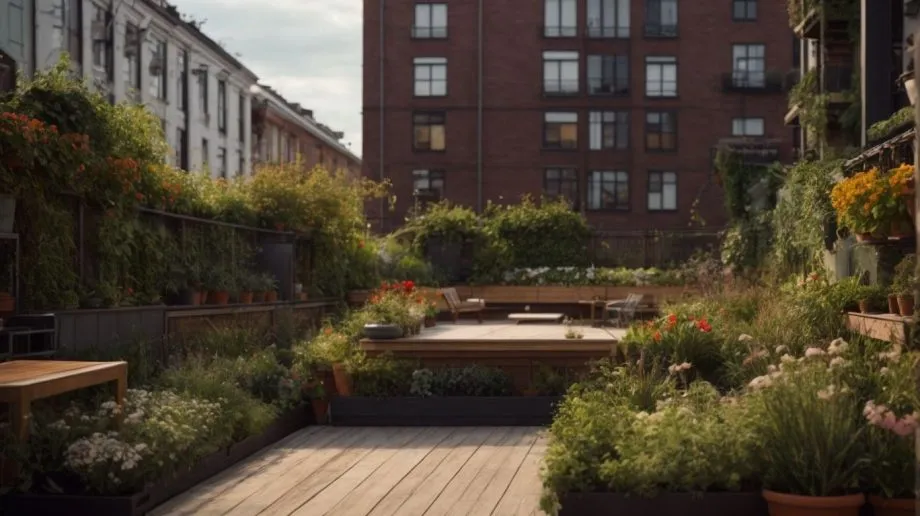
Having a rooftop garden offers numerous advantages, including enhancing air quality, providing fresh produce, and reducing energy costs through natural insulation.
One of the key benefits of rooftop gardens is their ability to improve air quality in urban environments, as plants play a crucial role in removing harmful pollutants and releasing oxygen into the atmosphere. By capturing carbon dioxide and filtering out toxins, rooftop gardens contribute to a healthier and cleaner surrounding.
Rooftop Garden Design for Beginners
These green spaces serve as a source of homegrown produce, allowing individuals to enjoy fresh fruits, vegetables, and herbs right at their doorstep.
This not only promotes a sustainable lifestyle but also ensures access to organic food options. Here are some reasons to start a rooftop garden:
Utilizes Unused Space
One key reason for having a rooftop garden is its ability to utilize otherwise unused space creatively, transforming rooftops into functional and aesthetically pleasing areas.
When designing a rooftop garden, it is crucial to consider various factors such as the weight restrictions of the structure and the materials being used.
- Urban gardens on rooftops bring a touch of nature to bustling cities, providing a serene retreat for residents.
- Safety must also be a top priority, with proper barriers and railings to prevent any accidents.
- Safety regulations need to be adhered to strictly to ensure the well-being of everyone enjoying the rooftop space.
- Incorporating greenery, seating areas, and pathways can enhance the overall ambiance and functionality of the rooftop garden.
Improves Air Quality
Rooftop gardens play a vital role in improving air quality by hosting a variety of plants such as evergreens and shrubs that contribute to natural air purification processes.
By strategically selecting evergreens and dense shrubs for rooftop gardens, not only do they enhance the aesthetic appeal of urban areas, but they also serve as natural air filters.
These plants excel in absorbing pollutants like carbon dioxide and releasing oxygen through photosynthesis, thus improving overall air quality.
Their foliage acts as a barrier against wind, reducing the impact of pollutants carried by air currents.
The dense vegetation provides a shield that enhances privacy for rooftop garden users.
Provides Fresh Produce
One of the key advantages of a rooftop garden is the opportunity to grow fresh produce through urban farming techniques, utilizing quality soil and efficient gardening practices.
Rooftop gardens play a vital role in urban settings, where space for traditional agriculture is limited.
By focusing on enhancing the soil quality, such gardens can support the growth of a variety of fruits, vegetables, and herbs.
Composting becomes essential in maintaining the fertility of the soil, ensuring that the plants receive the necessary nutrients for healthy development.
This sustainable approach not only yields fresh and organic produce but also contributes to reducing food miles and enhancing food security in urban areas.
Reduces Energy Costs
By serving as natural insulators, rooftop gardens help in reducing energy costs by providing windbreaks and installing features like glass balustrades to enhance energy efficiency.
Rooftop gardens play a crucial role in creating an energy-efficient environment.
They not only act as shields against strong winds but also optimize energy use through clever design choices.
Glass balustrades, for instance, allow for natural light to flood the space, reducing the need for artificial lighting.
Structural engineers often collaborate to ensure the safety and functionality of these garden spaces, making sure they are durable and sustainable.
Using lightweight furniture and plastic planters minimizes structural strain while maximizing greenery.
How to Plan Your Rooftop Garden Design?
Planning the design of your rooftop garden involves considering factors such as privacy requirements, suitable materials, and aesthetic preferences to create a harmonious outdoor space.
In terms of privacy considerations, you may opt for strategic plant placement, trellises with climbing vines, or even glass balustrades for a contemporary touch while ensuring seclusion.
Selecting appropriate materials that can withstand outdoor conditions is crucial to longevity and sustainability.
Weight restrictions play a significant role in rooftop gardens, influencing choices for plants, furniture, and structural components.
It’s essential to adhere to safety regulations, which may include securing proper permits and installing adequate barriers to meet safety standards for rooftop spaces.
Assess the Space
Before designing your rooftop garden, it is crucial to assess the available space, taking into account factors like wind exposure, privacy needs, and the overall layout for optimal utilization.
Considering the wind impact is pivotal as strong gusts can damage delicate plants and affect the overall aesthetics.
Additionally, privacy concerns must be addressed to create a tranquil retreat free from prying eyes.
Spatial arrangement plays a key role in maximizing space efficiency and ensuring that all elements like seating areas, planters, and pathways harmoniously blend together to create a cohesive design.
Consider the Weight Capacity
When planning your rooftop garden, ensure you consider the weight capacity of the structure, adhering to safety regulations and weight restrictions to prevent structural damage or hazards.
For rooftop gardens, weight capacity is crucial as it determines the ability of the structure to support various elements such as furniture, parasols, and planters without compromising safety.
Ensuring the weight load is within permissible limits not only prevents potential collapse but also safeguards against property damage and personal injury.
Structural integrity plays a pivotal role in supporting the additional load, making it essential to engage a qualified structural engineer to assess, reinforce, or design the rooftop garden accordingly.
Determine the Purpose of the Garden
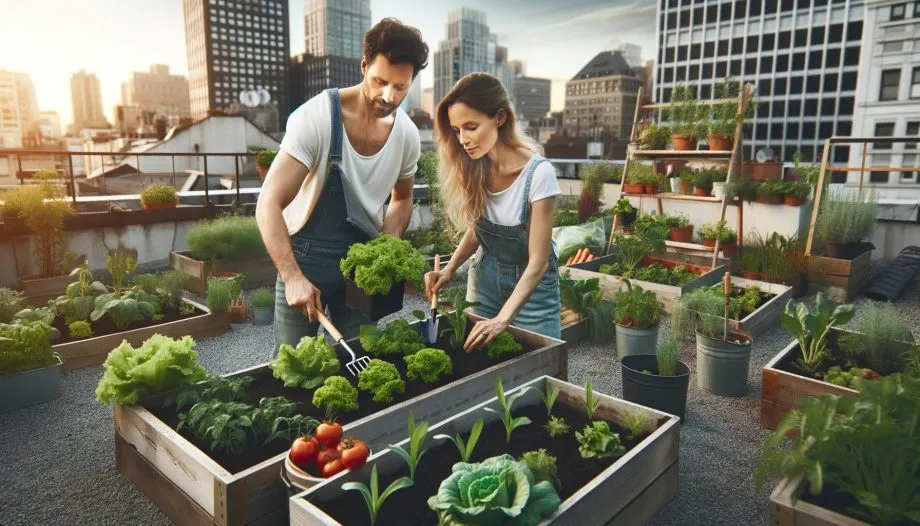
Defining the purpose of your rooftop garden is essential, whether it’s creating an urban oasis, maximizing space utility, or enhancing privacy for a relaxing outdoor retreat.
Urban garden concepts play a significant role in rooftop design, especially in densely populated areas where green spaces are limited.
Incorporating arborvitaes along the edges of your rooftop not only adds a touch of elegance but also provides natural screening and defines boundaries effectively.
When selecting plants for your rooftop garden, consider utilizing ivy to create vertical gardens, adding a lush green backdrop, and enhancing privacy from surrounding buildings.
Ensuring a balance between aesthetics and functionality is crucial to optimize the space efficiently.
Choose the Right Plants
American Pillar Arborvitae Tree + Thuja Occidental
Selecting the appropriate plants for your rooftop garden involves choosing varieties like shrubs and evergreens that are well-suited to the environment, climate, and aesthetic preferences of the space.
Shrubs offer not only aesthetic appeal but also serve as effective windbreaks for rooftop gardens, shielding other plants from excessive wind exposure.
Evergreens, on the other hand, provide year-round greenery, adding a touch of freshness to urban environments.
Container plants, like bamboo, can be excellent choices due to their adaptability to confined spaces and ability to thrive in varying light conditions.
When considering plant selection, take into account factors such as sunlight intensity, wind patterns, and the overall design scheme of your rooftop oasis.
What Are Some Design Ideas for a Rooftop Garden?
When exploring design ideas for a rooftop garden, options such as vertical gardens, container gardens, green roofs, and rooftop farming can transform your space into a thriving green retreat.
Vertical gardens are a fantastic way to maximize space by growing plants upwards, creating lush green walls that not only enhance aesthetics but also provide natural insulation.
Container gardens offer versatility, allowing you to plant various vegetables, herbs, or flowers in different sized containers.
Green roofs not only add a touch of eco-friendliness but also contribute to cooling the building and reducing energy costs. Don’t forget to include comfortable seating areas amidst the greenery for a cozy outdoor experience.
Urban farming inspirations can help you cultivate fresh produce right at your doorstep, promoting sustainability and a closer connection to nature.
Vertical Garden
Vertical Garden Bed, 5 Tiers Vertical Raised Garden Planter
A vertical garden is a fantastic design idea for rooftop spaces, allowing you to cultivate a lush green wall adorned with plants like ivy, vines, and hydrangea to add natural beauty and depth.
When creating a vertical garden for a rooftop, windbreaks play a crucial role in protecting delicate plants from harsh rooftop conditions.
Choosing the right plant varieties that can thrive in the exposed environment is key to the success of the garden.
Incorporating an efficient irrigation system is essential to ensure the plants receive an adequate water supply, especially in hot, sunny conditions.
Mixing contrasting foliage textures and colors can create a visually pleasing cascading effect that softens the hard lines of the rooftop architecture, blending seamlessly with elements like glass and balcony railings.
Container Garden
Container gardening offers a versatile and space-saving solution for rooftop gardens, enabling the growth of various plants, shrubs, and evergreens in portable containers to suit different design preferences.
This method not only allows for a diverse selection of plant species to thrive in a limited space but also offers flexibility in rearranging the garden layout as needed.
The mobility of container gardens makes them ideal for optimizing sunlight exposure and protecting delicate plants from extreme weather conditions.
When creating a rooftop container garden, choosing the right plants, such as herbs, vegetables, and flowering varieties, can enhance both visual appeal and functionality.
Maintaining the garden’s health involves regular watering, appropriate soil composition, and occasional fertilization with compost to ensure optimal growth.
Green Roof
Implementing a green roof design involves incorporating vegetation and urban farming elements on the rooftop, transforming the space into a sustainable and eco-friendly environment.
Green roofs and rooftop gardens not only contribute to the aesthetic appeal of a building but also offer numerous environmental benefits.
The integration of plants, soil, and sustainable practices helps improve air quality, reduce the urban heat island effect, and promote biodiversity in urban areas.
These green spaces provide opportunities for urban farming and composting, allowing residents to grow their own produce and utilize organic waste effectively.
Rooftop Farming
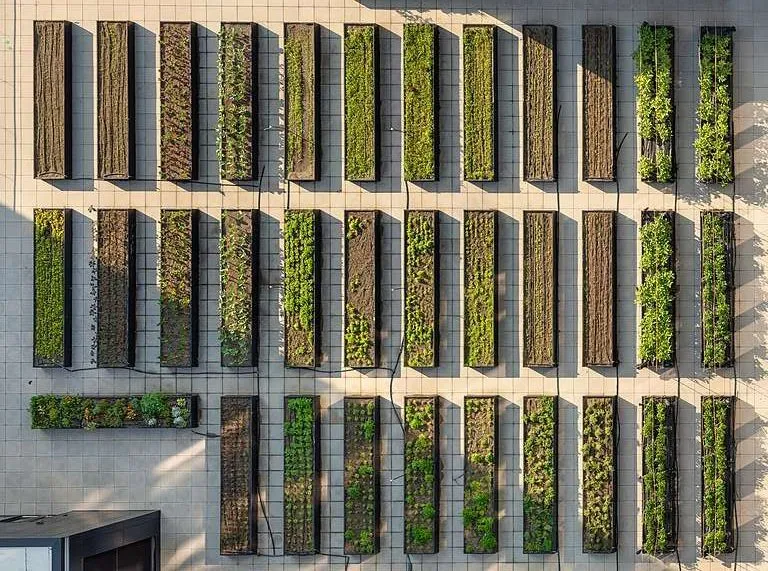
Rooftop farming presents an innovative approach to cultivating crops and herbs in an urban setting, utilizing quality soil, compost, and efficient gardening techniques to promote sustainable food production.
This method not only helps in utilizing underutilized urban spaces but also contributes to improving air quality, providing insulation, and reducing the urban heat island effect.
With proper planning and compliance with weight restrictions, rooftop gardens can be set up safely, supporting a wide array of vegetation ranging from vegetables and fruits to herbs and flowers.
Crop diversity is a key feature in ensuring a balanced diet and also aids in pest control through natural biodiversity.
Apart from providing fresh produce at home, urban agriculture fosters a sense of community by engaging residents in shared farming activities, workshops, and events.
What Are the Essential Elements of a Rooftop Garden?
The essential elements of a rooftop garden include a well-designed drainage system, efficient irrigation setup, sun and wind protection features, and a comfortable seating area to enjoy the outdoor space.
When designing a rooftop garden, it’s crucial to pay attention to the drainage system to prevent water pooling and ensure proper plant growth.
Adequate irrigation is essential to provide plants with the necessary water supply, especially in urban garden setups where natural rainfall might be limited.
Incorporating sun and wind protection solutions like trellises, pergolas, or shade sails can help create a more pleasant microclimate for plants and relaxation areas.
These elements not only shield the plants from harsh weather elements but also provide a comfortable environment for individuals to unwind.
Drainage System
A robust drainage system is essential for rooftop gardens to manage water efficiently, prevent waterlogging, and maintain the structural integrity of the building while addressing wind exposure and privacy concerns.
When designing a rooftop garden, the drainage system plays a crucial role in ensuring that excess water is effectively channeled away, preventing any potential damage to the plants and the structure itself.
Proper water management not only avoids water accumulation issues but also helps in conserving water resources by allowing for efficient irrigation practices.
A well-designed drainage system aids in safeguarding the balcony areas of the rooftop garden, enhancing overall usability and aesthetics.
It also plays a significant role in protecting the building’s structural components, such as walls and foundations, from potential water-related deterioration.
A functional drainage system contributes to maintaining the garden’s landscape by preventing erosion, maintaining soil health, and fostering ideal growing conditions for plants to thrive.
This ensures that the garden remains visually appealing and sustainable in the long run, offering a pleasant environment and stunning views for the inhabitants.
Irrigation System
An efficient irrigation system is vital for rooftop gardens to ensure proper hydration for plants, shrubs, and flowers, promoting healthy growth and sustainable garden maintenance.
Rooftop gardens often face challenges such as limited soil depths and exposure to direct sunlight, necessitating the need for precision in water distribution.
The irrigation system plays a crucial role in tackling these obstacles by delivering water directly to the roots of the vegetation, ensuring optimal hydration without wastage.
Water conservation is also a key benefit of a well-designed irrigation system in rooftop gardening.
By incorporating technologies like drip irrigation or utilizing smart timers, gardeners can reduce water usage while maintaining lush greenery.
Maintenance practices are simplified with an efficient watering system in place.
Accessibility to water sources makes it easier to monitor plant health, especially for evergreens and delicate species that require consistent moisture levels.
Sun and Wind Protection
Providing adequate sun and wind protection in rooftop gardens involves installing features like sun shade sails, windbreaks, and shading structures to create a comfortable and sheltered outdoor environment.
One key aspect of designing a rooftop garden is considering the impact of sunlight and wind exposure on both the plants and the people using the space.
A structural engineer can help determine the best placement for windbreaks to minimize strong gusts that can damage delicate plants and disrupt outdoor activities.
Incorporating glass features not only adds a sleek aesthetic but also acts as a barrier against harsh winds while still allowing sunlight to penetrate the space.
Shading solutions, such as pergolas or retractable awnings, provide relief from intense sun exposure, creating a more enjoyable atmosphere for relaxing or entertaining.
Choosing lightweight furniture and plastic planters allows for easy rearrangement and maintenance in rooftop gardens, ensuring flexibility and practicality in the design.
Seating Area
Incorporating a comfortable seating area in your rooftop garden provides a cozy retreat to relax, unwind, and enjoy the outdoor ambiance, complemented by strategic lighting and privacy-enhancing elements.
When designing the seating area, consider using green roof vegetation to create a tranquil atmosphere amidst the urban landscape.
Integrate wooden or rattan furniture to enhance the natural aesthetic and durability, enhancing the overall visual appeal of the rooftop garden.
You can also opt for ambient lighting solutions such as string lights or lanterns to illuminate the space during evenings for a cozy and inviting feel.
Incorporating trellises with climbing plants can not only offer shade but also enhance privacy by creating a natural barrier against prying eyes.
How to Maintain Your Rooftop Garden?
Maintaining your rooftop garden involves regular watering, pruning, pest control measures, and seasonal planting to ensure the health and vitality of your plants and greenery.
Watering:
Ensure your rooftop garden receives adequate water, especially during hot summer months. Consider installing a drip irrigation system for efficient watering.
Pruning:
Regularly trim back overgrowth to promote healthy growth and prevent overcrowding. Focus on removing dead or diseased branches to maintain plant vigor.
Pest Management:
Keep an eye out for common pests like aphids or spider mites. Use natural remedies like neem oil or introduce beneficial insects for eco-friendly pest control.
Seasonal Adjustments: Adjust your planting schedule based on the season. Opt for heat-resistant plants in summer and cold-hardy varieties in winter. Take advantage of balcony spaces for additional greenery or seating areas with strategically placed lights for cozy evenings.
Regular Watering and Fertilizing
Regular watering and fertilizing are essential tasks in rooftop garden maintenance to ensure proper hydration, nutrient supply, and soil health for optimal plant growth and vitality.
In rooftop gardening, due to weight restrictions and space limitations, it’s crucial to adopt efficient watering and fertilizing routines.
The soil quality plays a vital role in supporting plant growth.
Regularly checking the moisture levels and investing in a good composting system can help enhance soil fertility.
Utilizing organic fertilizers not only provides essential nutrients but also promotes sustainable plant nutrition by improving soil structure and microbial activity.
Pruning and Trimming
Pruning and trimming shrubs, trees, and evergreens are vital maintenance tasks in rooftop gardens to control growth, maintain aesthetics, and promote plant health and longevity.
Shrub management is particularly crucial in rooftop gardening, as these plants play a significant role in creating a lush and inviting outdoor space.
Regular pruning helps shape shrubs, preventing overcrowding and ensuring they don’t overshadow other elements like parasols, furniture, or the balcony itself.
In terms of tree shaping, strategic trimming not only enhances the overall appearance of your rooftop garden but also safeguards against potential hazards such as overhanging branches or weak growth.
By embracing these pruning and trimming practices as part of your routine maintenance, you are fostering an environment where plants can thrive, offering shade, beauty, and tranquility high above the city streets.
Pest Control
Implementing effective pest control measures is crucial in rooftop gardens to protect plants from harmful insects, birds, and other pests that can compromise plant health and garden aesthetics.
One approach to pest control in rooftop gardens is utilizing natural repellents such as neem oil, garlic spray, or peppermint oil, which can deter common garden pests without harmful chemicals.
Introducing beneficial insects like ladybugs or lacewings can help combat harmful pests naturally.
It’s also vital to take proactive measures such as removing debris or standing water which can attract pests.
Ensuring garden infrastructure materials are properly sealed against wind can prevent pests from finding entry points to the garden.
Seasonal Planting
Seasonal planting is essential for rooftop gardens to adapt to changing weather conditions, optimize plant growth, and refresh the garden’s aesthetic appeal with new blooms and greenery throughout the year.
Plant rotation plays a crucial role in maintaining soil health and preventing pest infestations in rooftop gardens.
By switching crops every season, you can reduce the risk of depleting nutrients and minimize the likelihood of diseases spreading throughout the vegetation.
Seasonal maintenance tasks such as pruning, weeding, and fertilizing are vital to ensure the longevity and productivity of your rooftop garden.
Implementing wind protection features, such as trellises or tall plants, can shield delicate crops from harsh winds while incorporating glass panels can create a microclimate that enhances plant resilience against extreme weather conditions.
Rooftop Garden Design for Beginners FAQs
Q. What is a rooftop garden and why should beginners consider designing one?
A. A rooftop garden is a garden that is created on the rooftop of a building, either on a flat or sloped surface.
It can be a small container garden or a larger, more complex design.
Beginners should consider designing a rooftop garden because it maximizes space, provides opportunities for growing food, and can reduce energy costs.
Q. Do I need any special equipment or tools to design a rooftop garden as a beginner?
A. No, you do not need any special equipment or tools to design a rooftop garden as a beginner.
Depending on the size and complexity of your design, basic gardening tools such as a trowel, gloves, and watering can will suffice.
You may also need to invest in containers, soil, and plants.
Q. Can I design a rooftop garden if I live in a city or urban area?
A. Yes, rooftop gardens are a great option for those living in cities or urban areas.
They provide a peaceful outdoor space amid a busy environment and can also help improve air quality.
Just make sure to check with your building’s management or landlord for any restrictions or guidelines.
Q. How much maintenance does a rooftop garden require for beginners?
A. The maintenance required for a rooftop garden will depend on the size and complexity of your design.
As a beginner, it’s best to start small and gradually add more plants and features.
Regular watering, pruning, and fertilizing are necessary for healthy plants, but rooftop gardens typically require less maintenance compared to ground gardens.
Q. Are there any specific plants that are recommended for a rooftop garden design for beginners?
A. Many plants are suitable for rooftop gardens, but as a beginner, it’s best to choose low-maintenance and hardy plants.
Some options include succulents, herbs, and vegetables like tomatoes and peppers.
Just make sure to research the growing conditions and choose plants that are suitable for your specific rooftop environment.
Q. What are some key factors to consider when designing a rooftop garden as a beginner?
A. Some important factors to consider when designing a rooftop garden as a beginner include weight restrictions, sunlight exposure, and drainage.
It’s crucial to ensure that your rooftop can support the weight of your garden and that it receives enough sunlight.
Additionally, proper drainage is important to prevent water from damaging your rooftop or causing leaks.
Conclusion: Rooftop Garden Design for Beginners
Bringing Your Rooftop Garden to Life
Creating a rooftop garden can transform your urban living space into a serene and green oasis.
By following these guidelines and incorporating your personal style, you can design a rooftop garden that not only enhances the aesthetics of your home but also provides a peaceful retreat to relax and connect with nature.
Learn more in our article Rooftop Gardening Ideas: 7 Tips and Tricks For Beginners
Key Takeaways for Beginners
- Start with a clear plan and consider the structural capacity of your rooftop.
- Choose plants that are suitable for your climate and rooftop conditions.
- Incorporate elements like seating areas and vertical gardens to maximize space.
Overcoming Common Challenges
- Ensure proper drainage and irrigation systems are in place to maintain plant health.
- Utilize windbreaks and shading structures to protect your garden from harsh weather.
Embracing Sustainability
- Opt for native plants and sustainable materials to reduce your environmental impact.
- Consider implementing a rainwater harvesting system to irrigate your garden efficiently.
Visit my Amazon Influencer Page for videos and gardening products Grow Your Own Garden

![Greenwood Nursery/Live Trees - American Pillar Arborvitae Tree + Thuja Occidentalis - [Qty: 10x Quart Pots] - (Click for More Options/Quantities) Greenwood Nursery/Live Trees - American Pillar Arborvitae Tree + Thuja Occidentalis - [Qty: 10x Quart Pots] - (Click for More Options/Quantities)](https://m.media-amazon.com/images/I/51-T2v3x5HL._SL500_.jpg)


